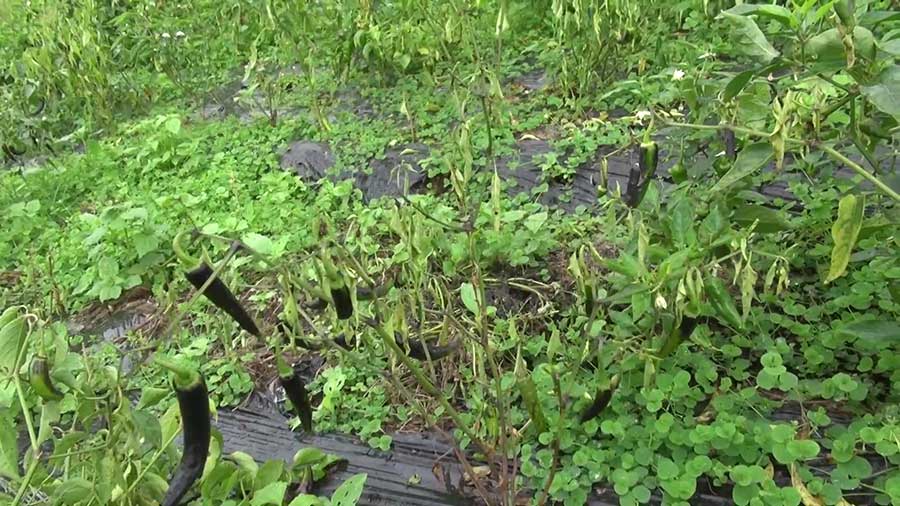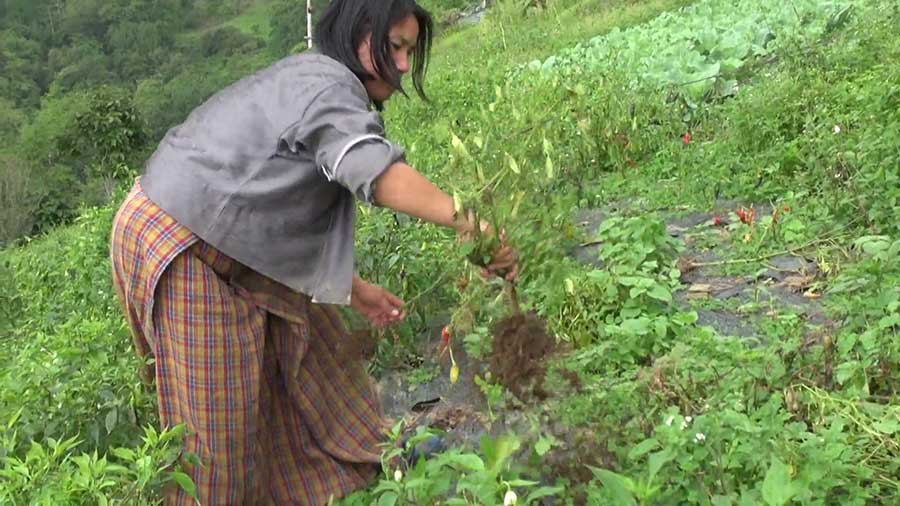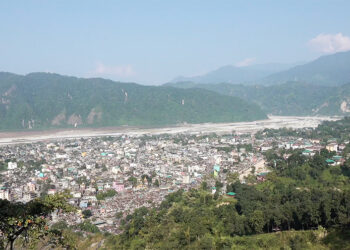
Chilli growers of Gamung and Shali villages in Pema Gatshel fear losing the outcome of their hard work to chilli blight infestation once again. The fungal infection has stormed the chilli fields of some 20 households in the two villages. Chilli blight is the most serious and widespread problem facing chilli growers across the country.
 It is almost time to harvest chilli in Gamung and Shali villages. But Kinga Wangmo from Shali is busy uprooting the wilted chilli plants instead of harvesting the crop.
It is almost time to harvest chilli in Gamung and Shali villages. But Kinga Wangmo from Shali is busy uprooting the wilted chilli plants instead of harvesting the crop.
The farmers in Gamung and Shali like those in the major chilli growing districts have been facing blight issues for the last two years. But the fungal infestation, they say, has become severe now.
“Chilli plants died even last year. But it was not as severe as it is today. Now, the field is almost getting empty. We use to earn at least Nu 30,000 in the past when we didn’t face blight issue,” said Kinga Wangmo.
Like Kinga, many farmers here fear they won’t be able to harvest even for self-consumption.
Some said they have not been able to harvest anything last season while some could harvest just half the yields.
“We depend on the income from selling a few vegetables and chilli. But now, we don’t think we can make any cash as the chilli plants started dying,” said Lungten Wangmo, a farmer in Shali village.
“This year, we don’t have anything to sell to earn an income. All the chilli plants are dying,” said Dozin from Gamung.
According to the Gewog Agriculture Extension Officer, chilli blight becomes most severe under high rainfall and where drainage is poor.
“This disease is caused due to heavy rainfall. And the other reason is when people keep seed, they do not see if it was infected. They collect it from wherever they get it. Moreover, in places like ours, farmers practice subsistence farming in small areas where it is not possible to do proper crop rotation,” said Agriculture Extension Officer, Sha Bahdur Barakoti.
Nevertheless, he added, farmers can avoid losing all their crops by changing their farming practice.
“They have to pluck the wilted plants, ensure field sanitation and should raise the bed. Currently, we don’t have the blight resistance chilli seed variety in the country,” added Sha Bahdur.
Shali and Gamung villages fall in low-altitude areas. So, the farmers here harvest chilli earlier compared to other villages which helps them earn a better price.
Unless provided with blight resistant variety of chilli seeds, the chilli growers here and across the country will continue to lose their crop to the fungal infestation every year.
Thinley Dorji, Pema Gatshel
Edited by Phub Gyem








